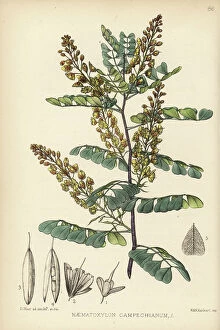Logwood Collection
Logwood, a natural dye derived from the heartwood of various tropical trees, has been used for centuries to create deep, rich shades of purple and red
All Professionally Made to Order for Quick Shipping
Logwood, a natural dye derived from the heartwood of various tropical trees, has been used for centuries to create deep, rich shades of purple and red. This valuable resource was once a major export from Central America and the Caribbean, with logs transported great distances by indigenous peoples and later European traders. The dye was highly prized for its ability to produce long-lasting, vibrant colors, making it an essential ingredient in textile production and fine art. Today, logwood remains an important part of cultural heritage and continues to inspire artists and craftspeople around the world.













